In recent years, the concept of rooftop gardens and urban farming is getting famous as people realise the need for sustainable green spaces in homes. This blog will explore the rooftop gardens for homes.
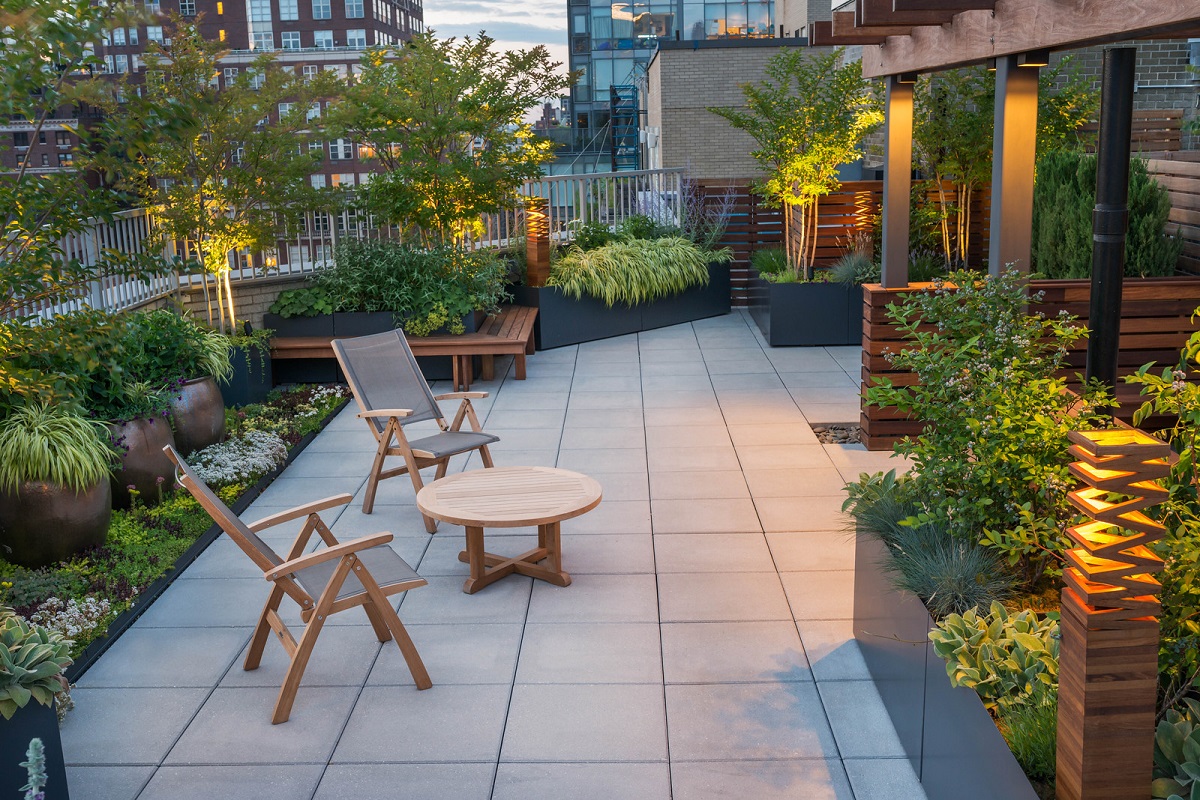
Importance Of Rooftop Gardens:
Rooftop gardening which is widely adopted by many nowadays as it benefits range from the environment to aesthetics. Additionally, it enhances aesthetics and adds value to the property. Deejos, the best residential architects in Chennai, excels in integrating rooftop gardens into their designs. We leverage innovative techniques to optimize space, ensuring structural integrity. Through meticulous planning, we transform rooftops into thriving green spaces, enriching residents' lives with healthier city surroundings.
BENEFITS OF ROOFTOP GARDENS:
- Increased Food Production: By utilizing rooftops and terraces, you can grow your own organic vegetables, herbs, and fruits, promoting self-sufficiency and reducing reliance on external food sources.
- Improved Air Quality: Rooftop gardens and terrace farms help mitigate the effects of pollution by absorbing carbon dioxide and releasing oxygen, creating cleaner and fresher air for residents.
- Enhanced Aesthetics: Transforming barren rooftops into vibrant green spaces improves the overall visual appeal of your home.
- Reduced Energy Consumption: Terrace gardens act as natural insulation, reducing heat absorption and cooling requirements within your home, thereby lowering energy consumption.
- Storm water Management: Green roofs absorb rainwater, reducing the burden on drainage systems during heavy rainfall and minimizing the risk of flooding.
METHODS OF ROOFTOP GARDENING:
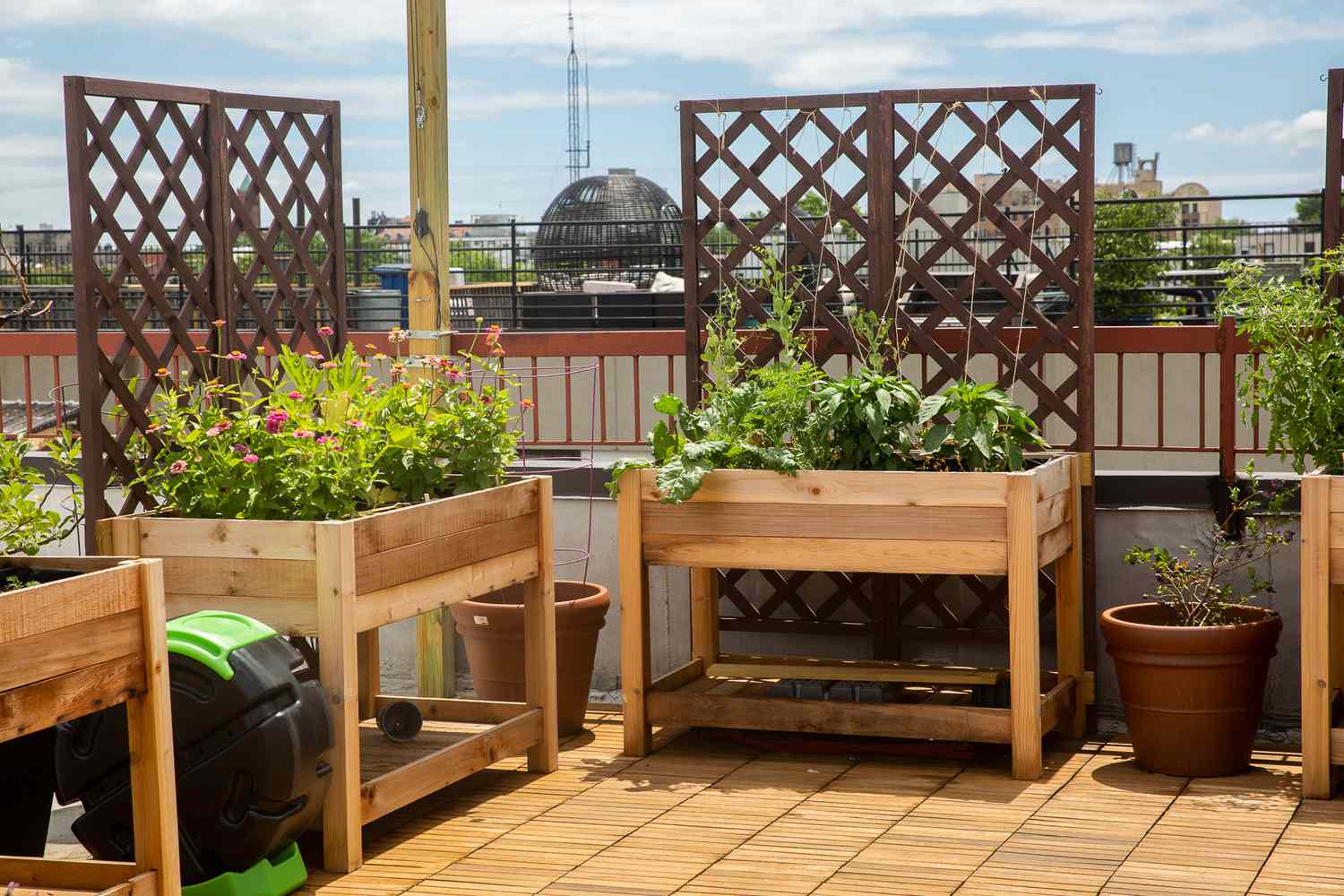
1.CONTAINER GARDENING:
- This method involves growing plants in containers such as pots, planters, or raised beds.
- It provides a versatile and accessible way to create a flourishing garden in a limited space.
- Vegetables like tomatoes, peppers, and leafy greens, as well as herbs and flowers, can thrive in containers.
How Container Gardening can be employed in home terrace:
Home terraces or rooftops offer a convenient and readily available area for container gardening. With proper planning and care, you can transform your terrace into a vibrant green space. Here's how you can make the most of this opportunity:
1. Assess Structural Capacity:
- Before starting your container garden, ensure that your home's terrace or roof can bear the weight of containers, soil, plants, and water.
- Consult with a structural engineer or an expert to evaluate the load-bearing capacity and make any necessary modifications.
2. Optimize Space:
- Determine the available space on your terrace or roof and plan accordingly.
- Utilize the vertical space by incorporating trellises, hanging baskets, or wall-mounted planters.
- Arrange the containers strategically to maximize sunlight exposure and create an aesthetically pleasing arrangement.
3. Container Selection:
- Choose containers that are lightweight, durable, and suitable for your terrace or roof environment.
- Options include plastic pots, fabric bags, or lightweight planters made of materials like fiberglass or composite.
- Ensure they have sufficient drainage holes to prevent waterlogging.
4.Soil and Plant Selection:
- Use a high-quality potting mix that provides good drainage and nutrient retention.
- Select plants that are suitable for container gardening and thrive in South Indian conditions.
- Consider a mix of edible plants like herbs, vegetables, and fruits, as well as ornamental plants to add beauty to your garden.
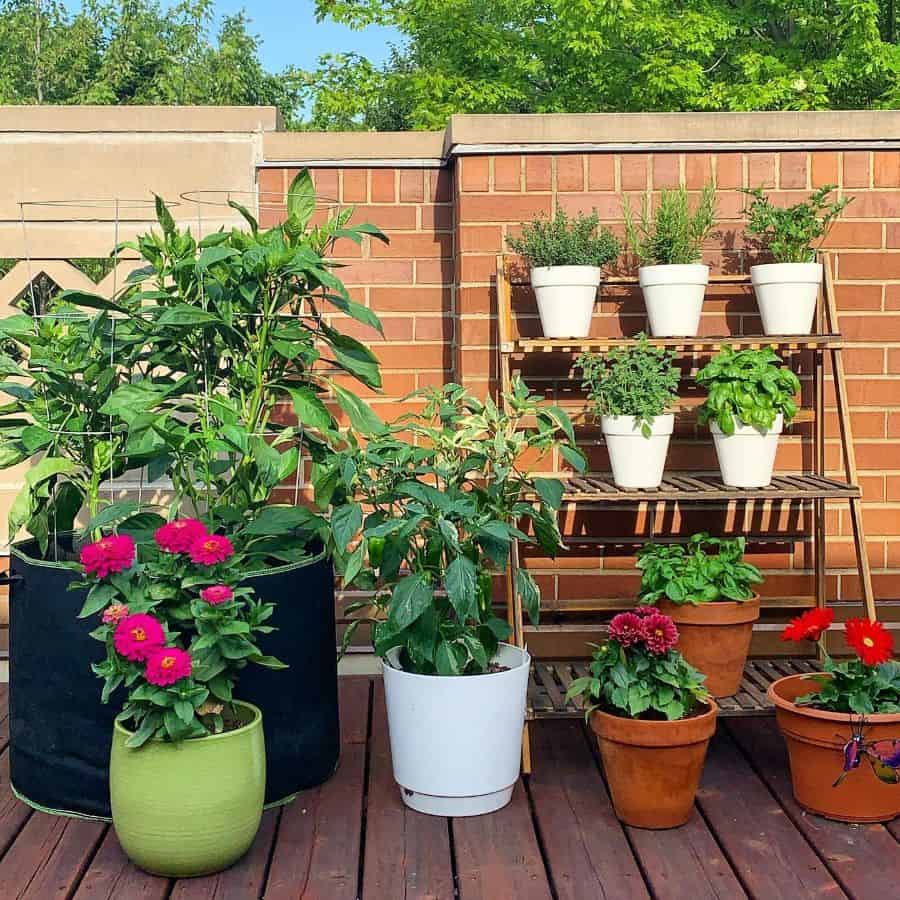
Benefits of Container Gardening:
- Containers can be easily rearranged or moved
- Using a potting mix in containers allows for better control over soil quality, drainage, and nutrient content, resulting in healthier plants.
- Require less weeding and can be easier to manage and maintain compared to gardens planted directly in the ground.
- Help reduce the risk of pests and soil-borne diseases, as it minimizes direct contact with the ground.
- Container gardens can be set at a convenient height, reducing the need for bending or kneeling, making them suitable for people with limited mobility.
The Brooklyn Grange Rooftop

- The Brooklyn Grange Rooftop Farm in New York City, USA, demonstrates the potential of container gardening on a larger scale.
- Spanning multiple rooftops, it utilizes lightweight containers and raised beds to grow an impressive variety of organic vegetables, herbs, and flowers.
- The farm not only provides fresh produce to the local community but also contributes to urban agriculture and environmental sustainability.
2.VERTICAL GARDENING:

- Vertical gardening is an innovative and space-saving method that allows you to utilize vertical spaces on your home terrace or roof for gardening purposes.
- It involves growing plants vertically, either by utilizing walls, trellises, or specialized structures.
How Vertical Gardening can be employed in home terrace:
Vertical gardening is particularly well-suited for home terraces, where horizontal space may be limited. Here's how it can be effectively used:
Wall-mounted Planters:
- These planters can be made of materials like plastic, metal, or fabric, and they allow you to grow a variety of plants vertically.
- You can plant herbs, small vegetables, or decorative flowering plants in these planters, creating a beautiful green backdrop for your terrace or roof.
Trellises and Arbors:
- These structures provide support for climbing plants such as cucumbers, beans, or vines like passionflowers or jasmine.
- By training these plants to grow vertically, you can maximize the available space and create a stunning vertical garden.

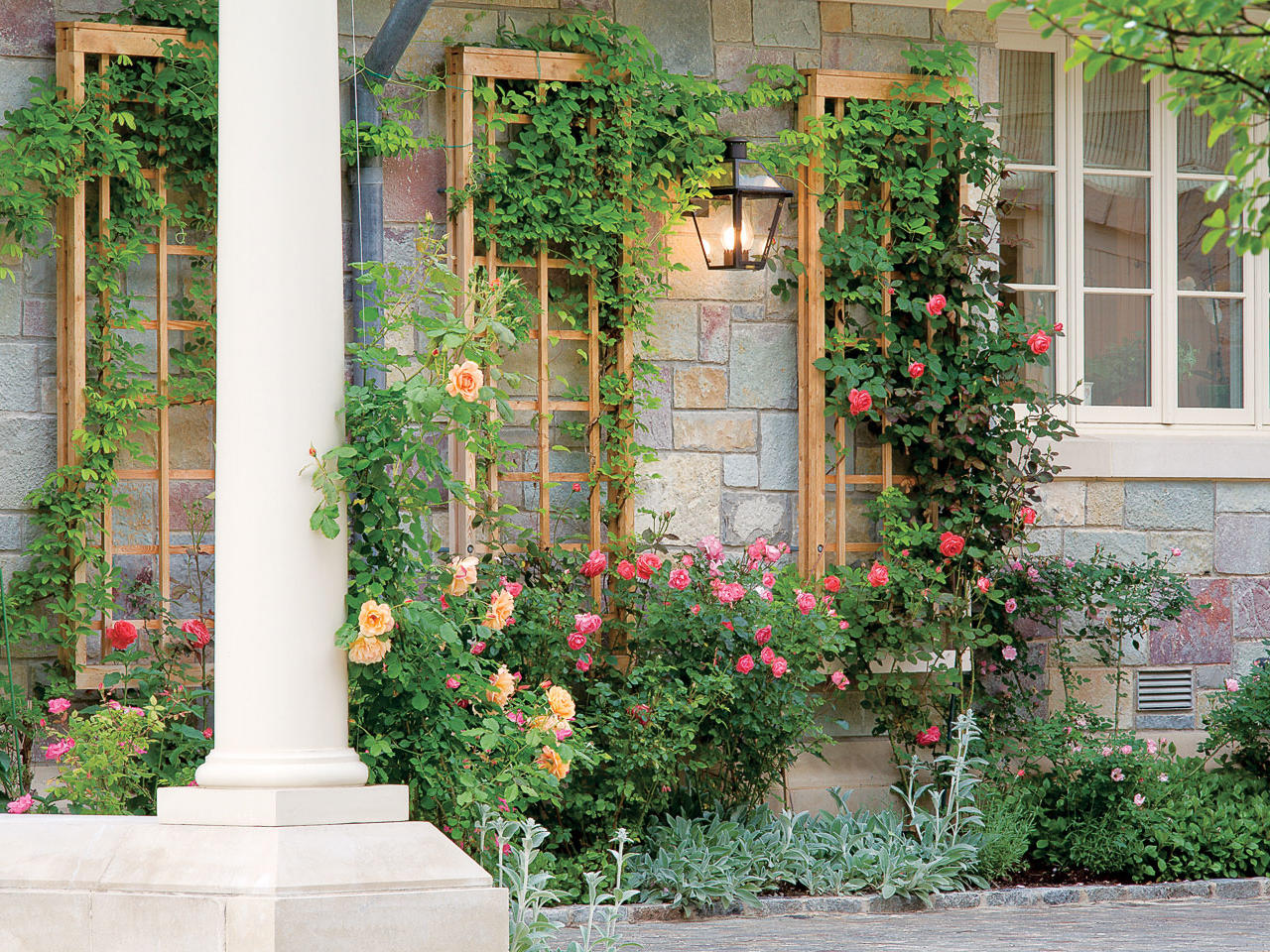
Vertical Tower Gardens:
- Vertical tower gardens are freestanding structures that allow you to grow plants in a compact vertical arrangement.
- These towers are often made of stacked planters or pockets, allowing for the cultivation of multiple plants in a small footprint.
- Vertical tower gardens are ideal for growing herbs, lettuce, strawberries, or even ornamental plants, and they can be easily incorporated into home terraces.
Benefits of Vertical Gardening:
- Maximizes the use of limited space by utilizing vertical surfaces, making it ideal for small home terraces or rooftops.
- Allows you to grow a greater variety of plants in a compact area
- Add visual appeal and create a lush, green ambiance to your home terrace or rooftop. They can transform a bare wall or empty space into a vibrant living tapestry of plants.
- They act as natural air purifiers, creating a healthier environment for you and your family.
- The dense vegetation in vertical gardens provides an additional layer of insulation, helping to regulate temperature and reduce energy consumption, both for cooling and heating.
- Vertical gardens can absorb and dampen noise, acting as a natural sound barrier. This is particularly beneficial if your home is located in a noisy urban environment.
Bosco Verticale, Italy
- The "Bosco Verticale" (Vertical Forest) in Milan, Italy, is an iconic example of vertical gardening on a large scale.
- The twin towers are covered in a lush vertical forest comprising more than 700 trees and 20,000 plants.
- This remarkable project showcases how vertical gardens can transform the appearance of a building, create a microclimate, and provide habitat for wildlife.
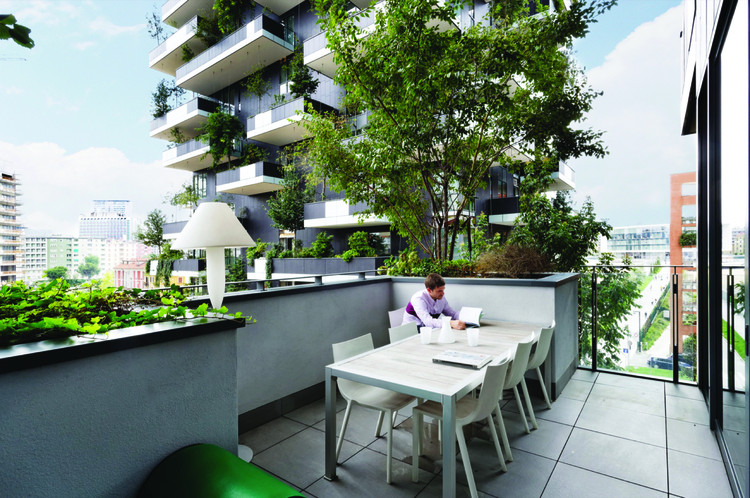
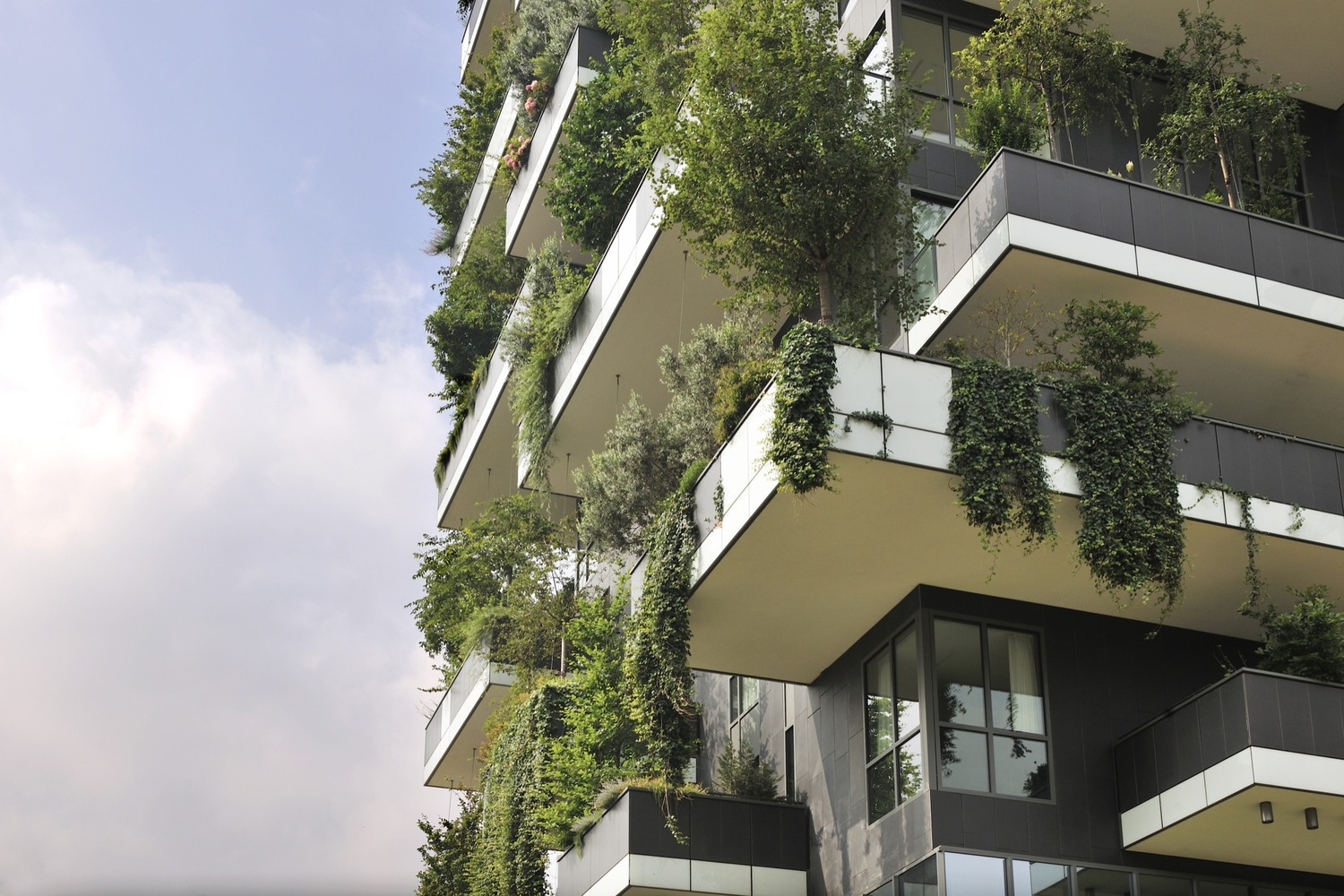
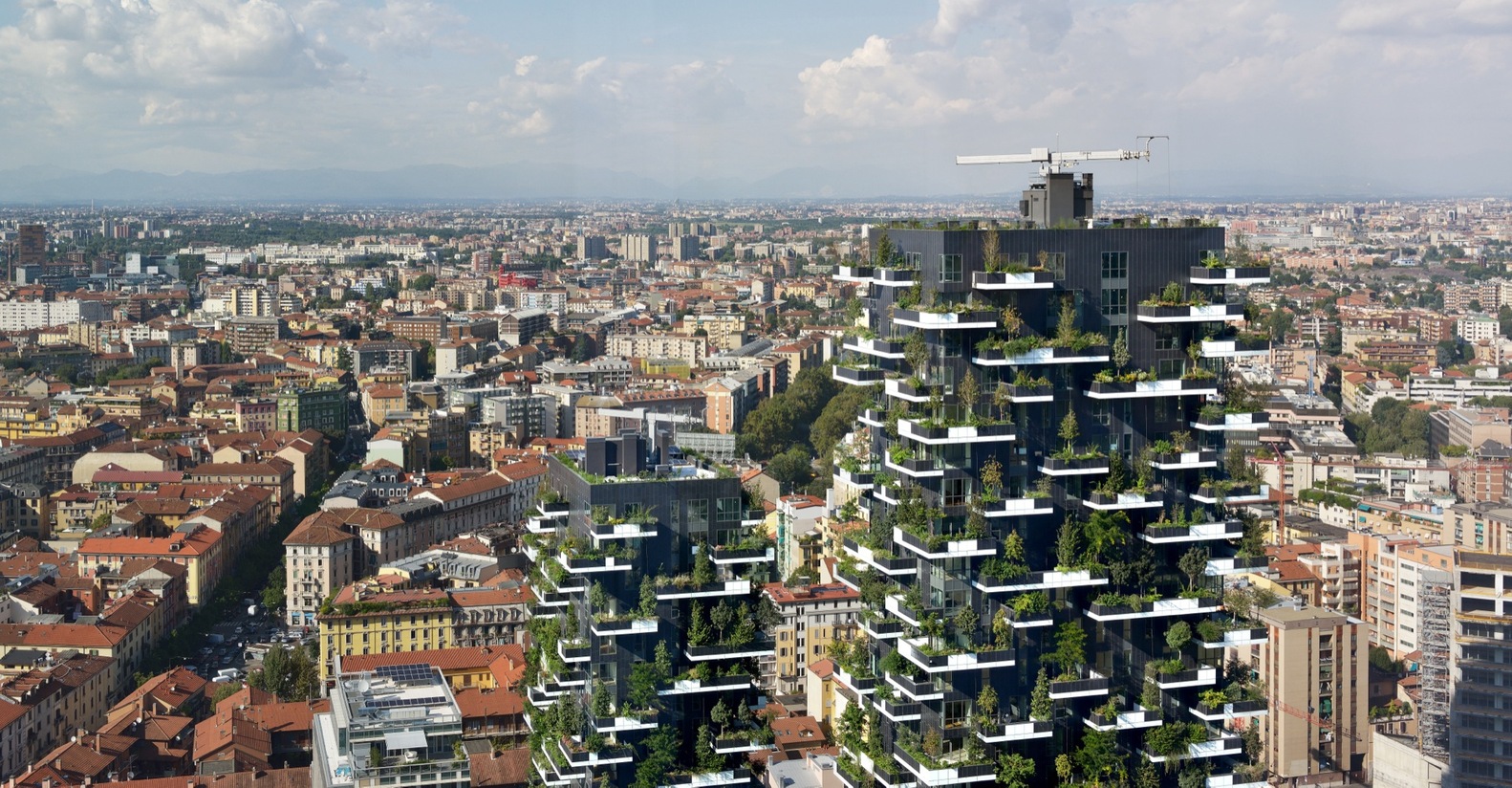
3. HYDROPONICS:

- Hydroponics is a soilless gardening method that involves growing plants in water with added nutrients.
- Hydroponics can be effectively utilized in home terraces or rooftops, providing an efficient and space-saving way to cultivate a variety of plants.
How Hydroponics can be employed in home terrace:
1. Vertical Systems:
- Vertical hydroponic systems, such as tower gardens or vertical racks, are ideal for maximizing vertical space.
- By utilizing vertical structures, you can cultivate a diverse range of vegetables, herbs, and even flowering plants.
2. Container Systems:
- Hydroponic container systems, such as deep-water culture or nutrient film technique, can be set up in containers or troughs on your terrace or rooftop.
- Containers can be arranged to optimize space utilization and can be easily adjusted or expanded as needed.
3. Greenhouse Structures:
- For larger terrace spaces, greenhouse structures can be installed to create an enclosed hydroponic growing environment.
- Greenhouses offer controlled conditions for temperature, humidity, and lighting, allowing year-round cultivation.
- This setup is beneficial for growing sensitive plants or those that require specific environmental conditions.
Benefits of Hydroponics:
1. Efficient Resource Utilization:
- Hydroponics uses up to 90% less water compared to traditional soil-based agriculture.
- The water used in hydroponics is recirculating within the system, minimizing waste.
- Additionally, nutrient solutions can be precisely controlled, reducing the need for fertilizers.
2. Faster Growth and Higher Yields:
- Plants grown hydroponically have access to a consistent supply of water, nutrients, and oxygen, resulting in accelerated growth rates and higher yields.
- Hydroponic systems provide optimal conditions for plant development, allowing for year-round cultivation and multiple growing cycles.
3. Reduced Pest and Disease Issues:
- With hydroponics, there is a reduced risk of soil-borne pests and diseases.
- The absence of soil eliminates many common issues, minimizing the need for chemical pesticides or fungicides. This results in cleaner, healthier produce.
4. Conservation of Natural Resources :
- Hydroponics reduces the need for arable land, making it a sustainable solution for urban agriculture.
- It minimizes soil erosion, conserves water resources, and reduces the carbon footprint associated with traditional farming practices.
Oxyfarms Aquaponics Research Center
- The Oxyfarms Aquaponics Research Center in Bengaluru, India, showcases an innovative approach to rooftop hydroponics.
- They have developed advanced aquaponics systems that combine hydroponics with fish cultivation.
- This integrated system not only provides nutrient-rich water for plant growth but also produces sustainable protein sources.
Terrace farming and rooftop gardens offer an incredible opportunity to transform your home into green, sustainable, and productive environment. By embracing these methods, you can enjoy numerous benefits such as fresh food, improved air quality, reduced energy consumption, and enhanced aesthetics. With a variety of methods available, embrace this eco-friendly trend and create your own garden on your rooftop.
Deejos, the best architecture company in Chennai, are your companions in achieving a greener, healthier urban environment. We try this by seamlessly integrating rooftop gardens into our designs, prioritizing eco-conscious answers. Our progressive techniques optimize area, ensure structural integrity, and facilitate efficient water management. With our meticulous planning, Deejos transforms rooftops into thriving green spaces, enriching your life.